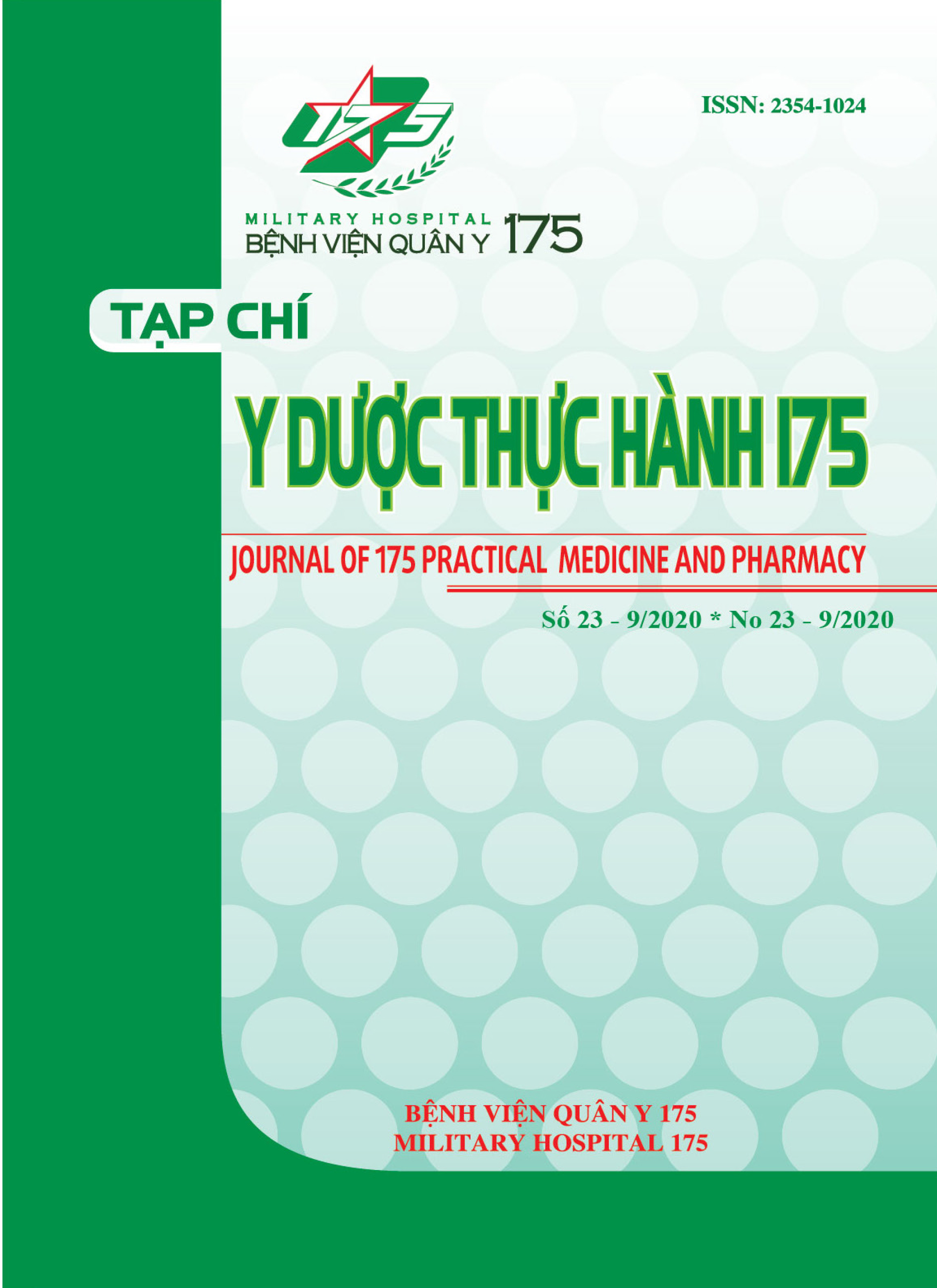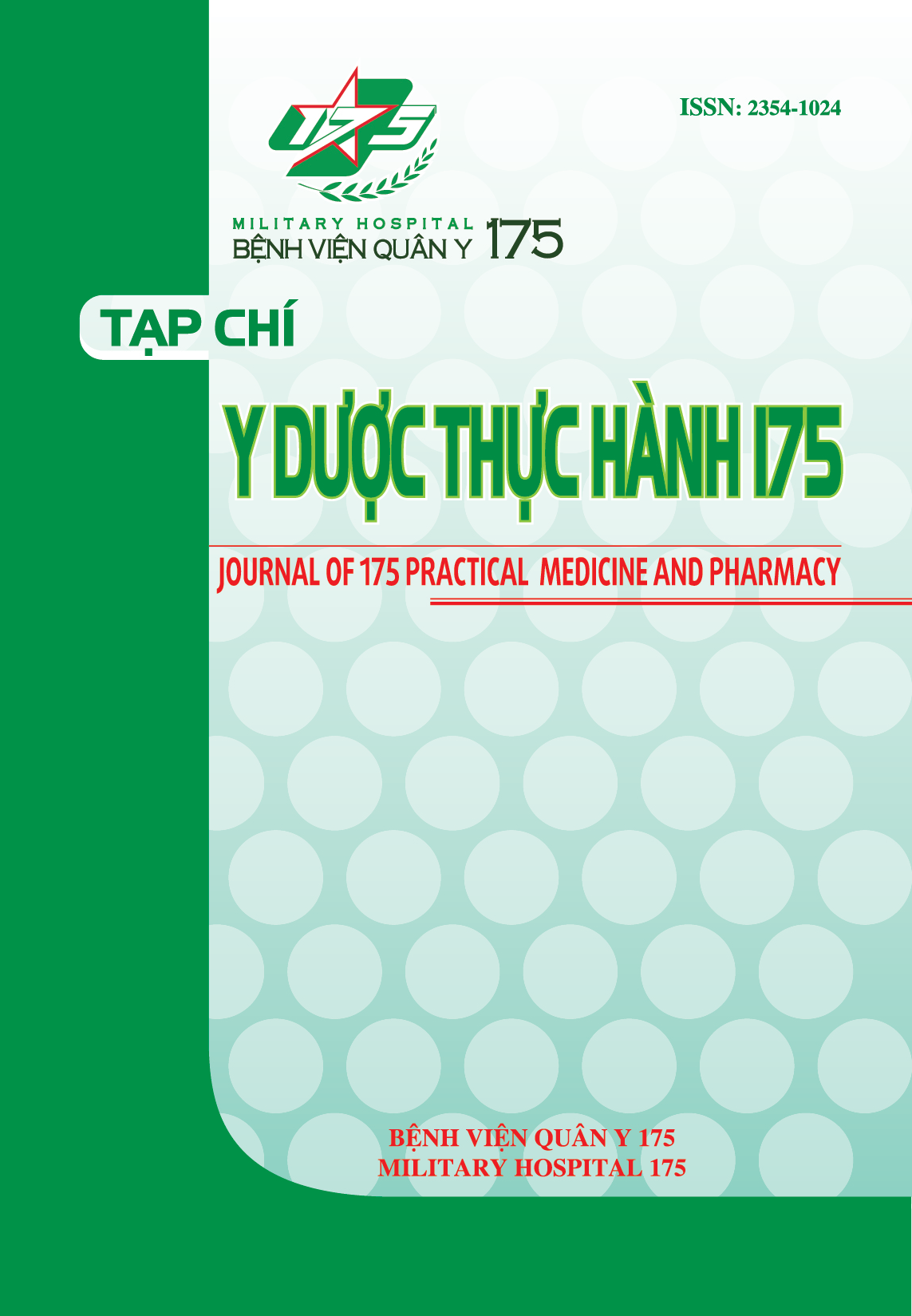STUDY ON hs-CRP PLASMA CONCENTRATIONS AND SOME CARDIOVASCULAR RISK FACTORS IN PATIENTS WITH TYPE 2 DIABETES
Authors
Keywords:
Cardiovascular risk factors, Type 2 diabetesReferences
Đào Thị Dừa, Trần Thừa Nguyên, Trần Huy Hoàng, cs. (2017), “Nghiên cứu mối tương quan giữa nồng độ hs-CRP huyết thanh với một số yếu tố nguy cơ tim mạch ở bệnh nhân đái tháo đường týp 2”, Chuyên đề đái tháo đường, Hội nội tiết đái tháo đường Việt Nam.
Lê Đình Tuân, Nguyễn Thị Hồ Lan, Trần Thị Thanh Hóa, cs. (2015), “Nghiên cứu nồng độ Glucagon-like peptide 1 ở bệnh nhân đái tháo đường týp 2”, Tạp chí y dược học quân sự, 9.
Trần Thanh Sang, Nguyễn Thị Bích Đào (2014), “hs-CRP và Fibrinogen ở bệnh nhân đái tháo đường týp 2 không bệnh lý tim mạch”, Tạo chí nghiên cứu y học, Y học TP Hồ Chí Minh, 18(4/2014), tr.53-59.
Trần Thị Trúc Linh (2016), “Nghiên cứu mối liên quan giữa biểu hiện tim với mục tiêu theo khuyến cáo ESC-EASD ở bệnh nhân đái tháo đường týp 2 có tăng huyết áp”, Luận án tiến sỹ y học.
Mahajan A., Jaiswal A., Tabassum R., et al. (2012), “Elevated levels of C-reactive protein as a risk factor for metabolic syndrome in Indians”, Atherosclerosis, 220(1), 275-81.
Pan An, Wang Yeli, Yuan Jian-Min, et al. (2017), “High-sensitive C-reactive protein and risk of incident type 2 diabetes: a case–control study nested within the Singapore Chinese Health Study”, BMC Endocrine Disorders, 17(1), 8.
Roopakala M, Pawan H, Krishnamurthy U, et al. (2012), “Evaluation of high sensitivity creactive protein and glycated hemoglobin levels in diabetic nephropathy”, Saudi Journal of Kidney Diseases and Transplantation, 23(2), 286-289.
Schnell Oliver, Amann-Zalan Ildiko, Jelsovsky Zhihong, et al. (2013), “Changes in A1C Levels Are Significantly Associated With Changes in Levels of the Cardiovascular Risk Biomarker hs-CRP: Results from the SteP study”, Diabetes Care, 36(7), 2084-2089.
Verma Meena, Paneri Sangeeta, Badi Preetha, et al. (2006), “Effect of increasing duration of diabetes mellitus type 2 on glycated hemoglobin and insulin sensitivity”, Indian journal of clinical biochemistry : IJCB, 21(1), 142-146.
Downloads
PDF Downloaded: 87










